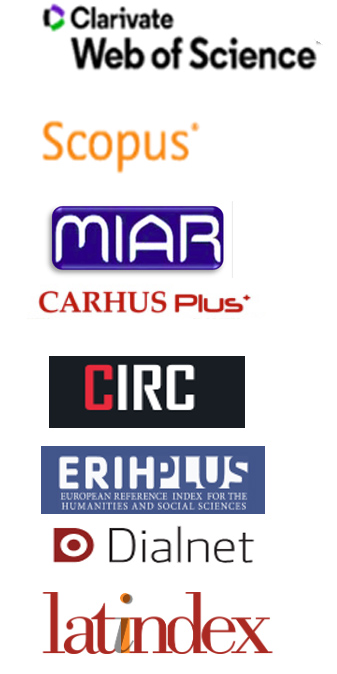O O Retoque na Fotografia Científica – A Colecção de Negativos de Vidro do Museu de História Natural e da Ciência da Universidade do Porto
Resumo
Este trabalho apresenta parte do projecto de investigação sobre o retoque de negativos fotográficos de gelatina e prata em suporte de vidro, intenções, impacto desta prática na imagem e objecto e o seu estado de conservação. Este é um estudo de caso do uso das técnicas de retoque numa colecção de carácter científico, do antigo Instituto de Antropologia Dr. Mendes Correia, do museu de Historia Natural e da Ciência da Universidade de Porto (MHNC-UP). Na fotografia científica há a necessidade de um registo rigoroso e a representação da verdade, o que diferencia este tipo de colecção fotográfica de outras. Qualquer alteração, como o retoque, deve portanto ter mínimas ou nenhumas intenções estéticas. Identificaram-se negativos retocados nesta colecção científica e académica, o que permitiu comprovar o propósito de seu uso e a necessidade da sua preservação.
Downloads
Referências
CORREIA, A. A. M. (1916). “Sobre alguns objectos protoistóricos e lusitano-romanos especialmente de Alpiarça e Silvã”. Lisboa. O Archeologo Português XXI: 331-337.
CORREIA, A. A. M. (1940). “Nota sobre a fotografia aplicada à Antropologia em Portugal”. In Comemoração do Centenário da Fotografia. Sep. Memórias da Academia das Ciências de Lisboa, classe Ciências, Carvalho, A. (coord.). Lisboa: Academia das Ciências de Lisboa, 123-125.
COSTA, F. M; JARDIM, M. E. (coord.). (2014). 100 anos de fotografia científica em Portugal (1839-1939). Imagens e instrumentos. Lisboa: Edições 70.
FRIZOT, M. (dir.) (1995). Nouvelle Histoire de la Photographie. Paris: Ed. Bordas - Adam Biro.
HANNAVY, J. (Ed.). (2007). Encyclopedia of Nineteenth-Century Photography. New York: Routledge.
HERRERA GARRIDO, R. (2011).“Técnicas de retoque de negativos fotográficos historia y conservación”. Pátina, 16: 125-136.http://revista-patina.escrbc.com/numero/16. [Accessed: 03/05/2016].
MATOS, P. (2012). “Mendes Correia e a Escola de Antropologia do Porto: Contribuição para o estudo das relações entre antropologia, nacionalismo e colonialismo (de finais do século XIX aos finais da década de 50 do século XX)”. Thesis. Lisbon: Instituto de Ciências Sociais da Universidade de Lisboa.http://hdl.handle.net/10451/7831. [Accessed 02-11-2016].
MATOS, P. F. (2014). “A fotografia na obra de Mendes Correia (1 888-19ó0): Modos de representar, diferenciar e classificar da Antropologia Colonial”. In O Império da Visão – Fotografia no contexto colonial Português (1860-1960). Vicente, F. L. (org.).Lisboa: Edições 70, 45-66.
NUNES, M. F. (2005). “Arqueologia de uma prática científica em Portugal – uma história da fotografia”. História. III - 6: 169-183. http://ler.letras.up.pt/uploads/ficheiros/3382.pdf. [Accessed 02-11-2016].
PEDERSEN, K. B.; Kejser, U. B.; Christensen, M. C. (2005). Coatings on Black-and-white Glass Plates and Films. In C. McCabe, Coatings on Photographs: Materials, Techniques, and Conservation (pp. 108-131). American Institute for Conservation of Histooric and Artistic Works.
PEREIRA, C. (2010). “O retoque do negativo fotográfico: estudo de uma colecção do Arquivo Fotográfico da Câmara Municipal de Lisboa”. Estudos de Conservação e Restauro, 2: 38-57. http://revistas.rcaap.pt/ecr/article/view/3153/2542. [Accessed: 03/5/2016].
PEREIRA, C. (2016). “Materials and techniques for retouching glass plate photographic negatives in the beginning of the 20th century”. In III International Meeting on Retouching of Cultural Heritage: RECH3. Porto. Escola Artística e Profissional Árvore, 65-72 https://issuu.com/ineditar/docs/postprints_rech3 [Accessed: 03/5/2016].
PERES, I. V. (2013). “Fotografia científica em Portugal, das origens ao séc. XX: investigação e ensino em química e instrumentação”, thesis. Lisbon: Faculdade de Belas Artes da Universidade de Lisboa. http://hdl.handle.net/10451/8692. [Accessed: 03/10/2016].
SCHRIEVER, J. B. (1909). Complete self-instructing library of practical photography Vol. 1-10 Scranton: American School of Art and Photography. https://archive.org/details/completeselfinst10schriala. [Accessed: 10/6/2016]
SILVA, A. S. (1997).“O Porto em busca da Renascença (1880-1911)”. Penélope: Género, discurso e guerra, 17: 51-69.
VOGEL, H. W. (1870). Lehrbuch der Photographie - Theorie, Praxis und Kunst der Photographie. Berlin: Louis Gerschel Verlagsbuchhandlung. https://archive.org/details/lehrbuchderphoto00voge. [Accessed: 03/05/2016].
Os autores conservam os direitos de autor e de propriedade intelectual e garantem à revista Ge-Conservación o direito de edição e publicação do trabalho, sob a Creative Commons Attribution License. Este permite a partilha do trabalho, por outros, com o reconhecimento da autoria do trabalho e da publicação inicial nesta revista.
Os artigos podem ser utilizados para fins científicos e formativos, mas nunca com fins comerciais, expressamente, sancionados por Lei.
A informação existente nos artigos é da exclusiva responsabilidade dos autores.
A revista Ge-Conservación e os autores podem estabelecer, em separado, acordos adicionais para a distribuição não exclusiva da versão da obra publicada na revista (por exemplo, colocá-la num repositório institucional ou publicá-la em livro), com o reconhecimento da sua publicação inicial nesta revista.
É permitido e incentivado aos autores difundirem os seus trabalhos, electronicamente (por exemplo, em repositórios institucionais ou no seu próprio site) depois da sua publicação na revista Ge-Conservación, já que pode dar lugar a intercâmbios produtivos, assim como a citações mais amplas e mais cedo dos trabalhos publicados pelo autor.
Os dados pessoais fornecidos pelos autores são utilizados, unicamente, para os fins da revista e não serão proporcionados a terceiros.









